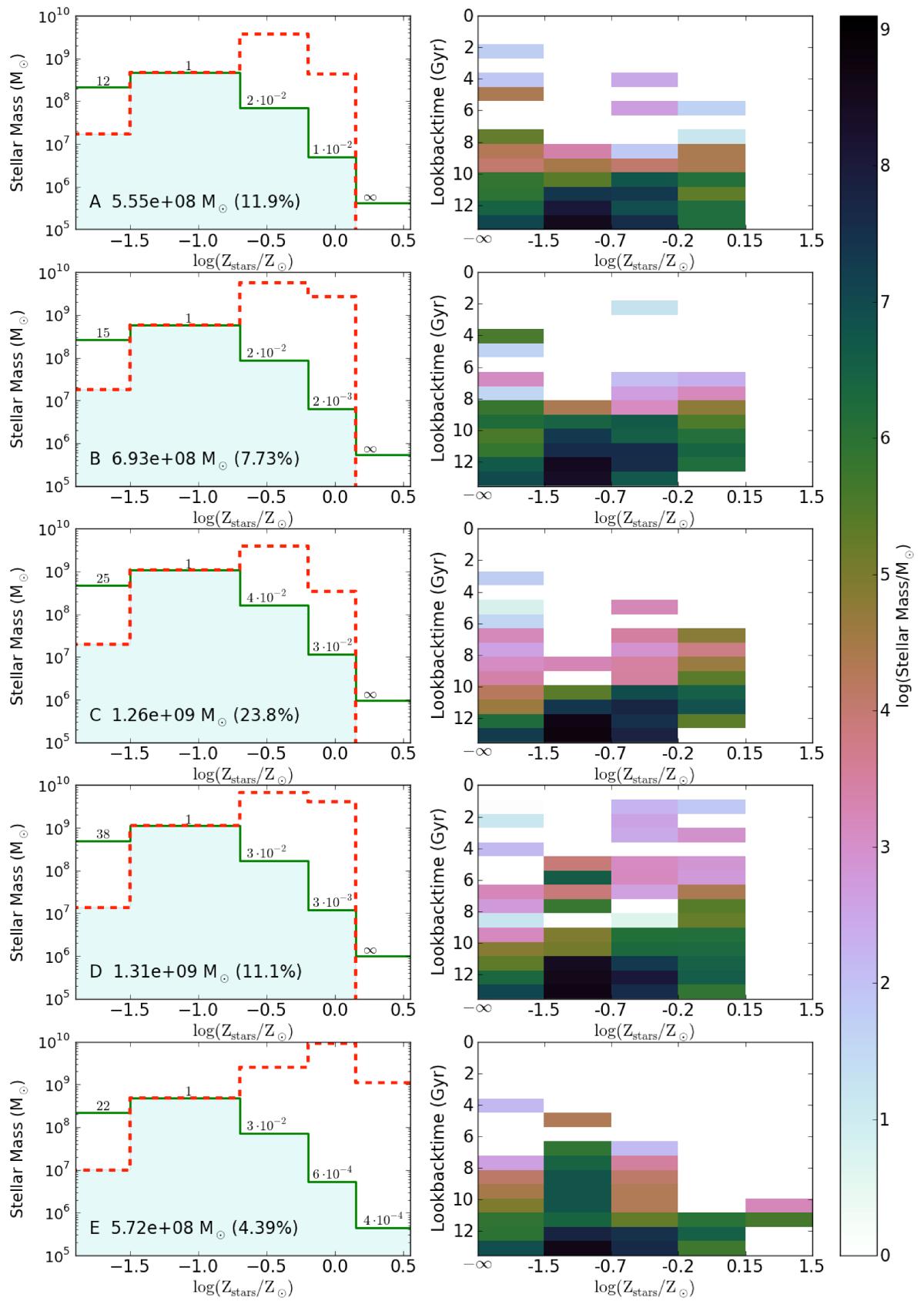Fig. 3

Left-hand side panels: MDF of the stellar halo in the solar neighbourhood based on a single Gaussian fit to the observed photometric metallicity distribution (green solid lines) subtracted from the co-added catalogue in SDSS Stripe 82 (An et al. 2013) compared with the spheroid MDFs in our semi-analytical model of galaxy formation combined with the Aquarius dark matter simulations (red dashed lines), for haloes A−E from top to bottom. Here, 0.3 dex was added to the [Fe/H] values of the observed MDF to compare them with our model’s log (Zstars/Z⊙) values (based on an estimation of the [ α/Fe] value for the α-rich (canonical) halo by Hawkins et al. 2015), since the metallicity values of our model can better be compared with [α/H] than with [Fe/H]. The numbers written on top of each bin of the observed MDF indicate the discrepancy between our model and the observed value (see text for details). The bin with log (Zstars/Z⊙) between −1.5 and −0.7 was used for the normalization of the observed MDF. The shaded area indicates the model MDF that we use as input for this population synthesis study of halo stars. The text in this shaded area indicates the halo ID, the total stellar halo mass, and the percentage of the total accreted stellar spheroid mass that we assume to be in halo stars. Right-hand side panels: age-metallicity maps (log (Zstars/Z⊙)) corresponding to the assumed stellar halo MDFs in the left-hand side panels, again for haloes A−E from top to bottom. The colour map represents the stellar mass (M⊙) per bin, on a logarithmic scale. The non-linear horizontal axis corresponds to the different sizes of the metallicity bins. The choice for this binning is explained in Sect. 3.
Current usage metrics show cumulative count of Article Views (full-text article views including HTML views, PDF and ePub downloads, according to the available data) and Abstracts Views on Vision4Press platform.
Data correspond to usage on the plateform after 2015. The current usage metrics is available 48-96 hours after online publication and is updated daily on week days.
Initial download of the metrics may take a while.


